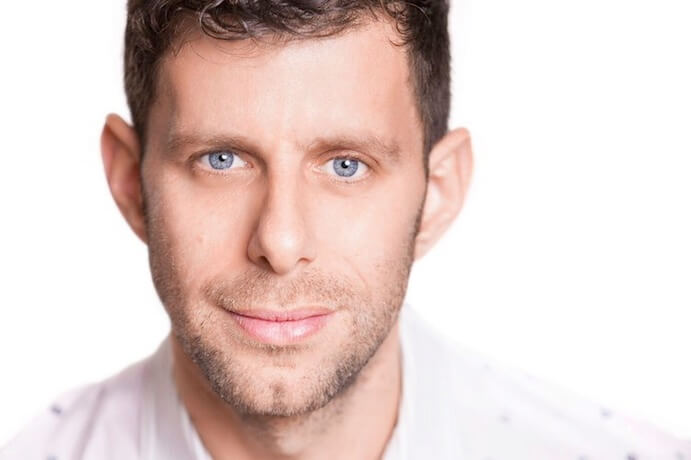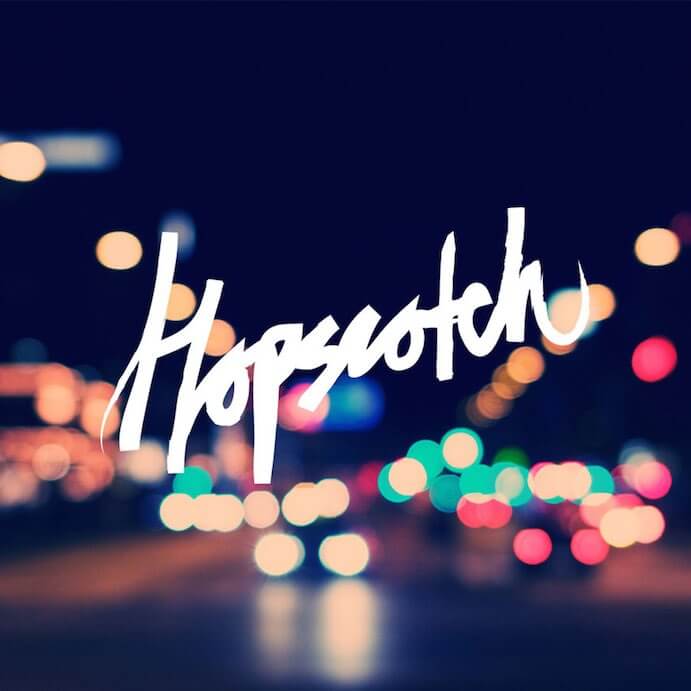Hopscotch is a completely different kind of album experience! After all, it is the result of a totally new way at looking at opera as envisioned by Yuval Sharon. Sharon is the founder and artistic director of The Industry, a Los Angeles-based company that looks to promote experimental music productions and change the concept of the traditional opera experience. Six composers and six librettists were asked to collaborate on Hopscotch, and the results are cohesive, engaging, and full of depth.
The live performance of Hopscotch occurred in multiple locations across Los Angeles and on three different routes that were traversed by car. Each route followed a different path and contained different scenes, which caused gaps in the story. This idea came from the book Rayuela (Spanish for “Hopscotch”) by Julio Cortázar. The book encourages the reader to explore the narrative in a non-linear fashion. Likewise, Hopscotch the opera was intentionally written and performed so that the audience member would see the production “out of order.” The album provides the same opportunity by providing different suggested playlists including the three original routes from the live performance.

Yuval Sharon–Photo by Casey Kringlen
The story is an adaptation of the Greek myth about the musician Orpheus and the love of his life Eurydice. When Eurydice is bitten by a snake and dies, Orpheus travels to the underworld and strikes a deal with Hades to bring her back. In Hopscotch, the Orpheus character is a girl name Lucha whose parents were killed in a car wreck when she was 15. Her love interest and Eurydice character Jameson becomes so consumed in his scientific pursuits that he pulls away more and more from society until one day, he vanishes. Lucha is haunted by these events for years until she finds an experimental headband Jameson created that transports her to an otherworldly place. She encounters both Jameson and her father who tell her that she doesn’t need someone to help lead her life–she can save herself.
Musically, most of the pieces were composed with more simplified instrumentation due to the mobile nature of the performance and the many outside venues in which these scenes took place. David Rosenboom‘s “Lucha’s Quinceañera Song” only uses acoustic guitar accompanying Lucha. Veronika Krausas‘ “Is All Time Simultaneous?” similarly uses only Lucha’s soprano voice singing over a toy music box. “Lucha and Orfeo” by Marc Lowenstein is scored for two violins supporting Lucha and Orfeo’s tenor voice. This thin scoring creates very intimate and fragile moments within the story and represent the heroine at her most vulnerable times.
“Floats the River Nebula,” composed by Ellen Reid, is one of the most chilling tracks on the album, but also one of the few moments in the opera where the main characters are not musically involved. It features a children’s choir, soprano Angel, and an array of percussion. The color palette of this ensemble evokes many different religious tones, but not one particular practice. This clashes with the libretto that employs a variety of scientific terms. The score requires the Angel, played by Quayla Bramble, to hold high notes for so long it seems to linger in the ether forever. This command over her instrument is impressive and beautiful to hear.

Hopscotch live performance–Photo by Casey Kringlen
Considering how many different composers, librettist, and performers worked on this project, it is impressive how cohesive the music is and how well the ideas come across. Each track contains a different and distinct flavor, but they all seem to coalesce in Andrew Norman‘s “To Find the Center,” the piece that both begins and end the album. It is also the piece that every route would end up at during the live performance. Every performer seems to find their way back into this piece creating a river of sound that ebbs and flows with the entrances and exits of the performers.
This immersive album experience The Industry has produced with Hopscotch leaves the listener yearning for the chance to go back and see a live production. The layers of this opera are so vast that it is hard to do them justice in short album review. It explores ideas about the need for intra- and interpersonal relationships, the connectivity of community, ability of self, the future of opera, and so much more. It will be exciting to see what new concepts The Industry will explore in future productions.




















